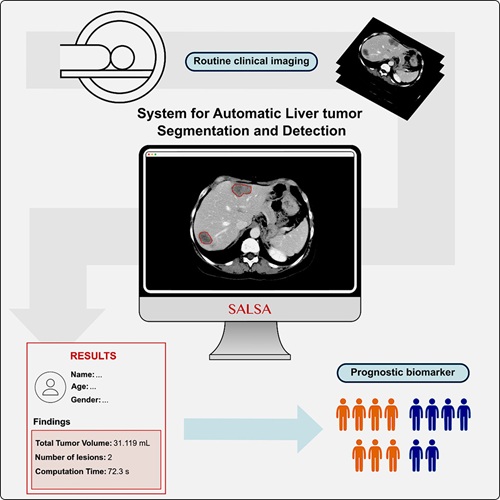3D Workstation Visualizes Thrombi Previously Not Seen with Traditional Imaging Technology
|
By MedImaging International staff writers Posted on 10 Jul 2012 |
New technology provides a groundbreaking, three-dimensional (3D) visualization tool that could enable a virtual angioscopy of the inside of cardiac structures using noninvasive computed tomography (CT) scanning.
Intrinsic Medical Imaging (Bloomfield, MI, USA), a developer of 3D medical imaging software, reported it has received US Food and Drug Administration (FDA) premarket notification clearance for its groundbreaking IMI Spectrum 3D imaging workstation (K121023). The company’s next-generation 3D capabilities will provide visualization and quantification tools designed to overcome errors, inconsistencies, and challenges associated with evaluating images utilizing existing conventional 2D and 3D methods.
“Intrinsic provides revolutionary, advanced 3D visualization which could enable a virtual angioscopy of the inside of cardiac structures through a simple, noninvasive CT scan,” said Arie Blitz, MD, director, Heart Transplantation and Mechanical Circulatory Support, University Hospitals Case Medical Center (Cleveland, OH, USA). “For example, we processed a patient’s standard 2D CT images using the IMI technology and saw thrombi in 3D previously undetected in 2D. This is amazing technology.”
Intrinsic employs uncompressed rendering techniques that preserve the integrity of the data from 2D to 3D, while enabling the user to navigate in real time, anywhere in the volume, while allaying visual artifacts and creating a more natural and user-friendly environment.
High-performance algorithms process more than 100 times more operations per second than existing 3D systems, creating an order-of-magnitude improvement in spatial resolution and image detail over existing standards. The IMI Spectrum 3D image visualization platform provides clinicians with diagnostic, planning, and treatment solutions to boost clinical effectiveness and speed the objective of saving lives.
“Receipt of this clearance is a significant step for our company and we look forward to improving patient outcomes while reducing unnecessary healthcare expenditures through the introduction of the IMI Spectrum later this year,” said Jorey Chernett, CEO of Intrinsic Medical Imaging. “Engaging clinicians throughout the development process is core to our commercialization strategy and clinical feedback has been extremely positive on the potential of the IMI Spectrum technology. Intrinsic has attracted a highly accomplished team with deep domain expertise focused on revolutionizing 3D medical imaging.”
Intrinsic Medical Imaging is a medical software company focused on the marketing of high-performance rendering techniques. The IMI Spectrum workstation, built around IMI’s Authentic 3D software, is an imaging system that enables the real-time processing, review, and analysis of volumetric data generated by conventional CT scanners.
Related Links:
Intrinsic Medical Imaging
Intrinsic Medical Imaging (Bloomfield, MI, USA), a developer of 3D medical imaging software, reported it has received US Food and Drug Administration (FDA) premarket notification clearance for its groundbreaking IMI Spectrum 3D imaging workstation (K121023). The company’s next-generation 3D capabilities will provide visualization and quantification tools designed to overcome errors, inconsistencies, and challenges associated with evaluating images utilizing existing conventional 2D and 3D methods.
“Intrinsic provides revolutionary, advanced 3D visualization which could enable a virtual angioscopy of the inside of cardiac structures through a simple, noninvasive CT scan,” said Arie Blitz, MD, director, Heart Transplantation and Mechanical Circulatory Support, University Hospitals Case Medical Center (Cleveland, OH, USA). “For example, we processed a patient’s standard 2D CT images using the IMI technology and saw thrombi in 3D previously undetected in 2D. This is amazing technology.”
Intrinsic employs uncompressed rendering techniques that preserve the integrity of the data from 2D to 3D, while enabling the user to navigate in real time, anywhere in the volume, while allaying visual artifacts and creating a more natural and user-friendly environment.
High-performance algorithms process more than 100 times more operations per second than existing 3D systems, creating an order-of-magnitude improvement in spatial resolution and image detail over existing standards. The IMI Spectrum 3D image visualization platform provides clinicians with diagnostic, planning, and treatment solutions to boost clinical effectiveness and speed the objective of saving lives.
“Receipt of this clearance is a significant step for our company and we look forward to improving patient outcomes while reducing unnecessary healthcare expenditures through the introduction of the IMI Spectrum later this year,” said Jorey Chernett, CEO of Intrinsic Medical Imaging. “Engaging clinicians throughout the development process is core to our commercialization strategy and clinical feedback has been extremely positive on the potential of the IMI Spectrum technology. Intrinsic has attracted a highly accomplished team with deep domain expertise focused on revolutionizing 3D medical imaging.”
Intrinsic Medical Imaging is a medical software company focused on the marketing of high-performance rendering techniques. The IMI Spectrum workstation, built around IMI’s Authentic 3D software, is an imaging system that enables the real-time processing, review, and analysis of volumetric data generated by conventional CT scanners.
Related Links:
Intrinsic Medical Imaging
Latest Imaging IT News
- New Google Cloud Medical Imaging Suite Makes Imaging Healthcare Data More Accessible
- Global AI in Medical Diagnostics Market to Be Driven by Demand for Image Recognition in Radiology
- AI-Based Mammography Triage Software Helps Dramatically Improve Interpretation Process
- Artificial Intelligence (AI) Program Accurately Predicts Lung Cancer Risk from CT Images
- Image Management Platform Streamlines Treatment Plans
- AI-Based Technology for Ultrasound Image Analysis Receives FDA Approval
- AI Technology for Detecting Breast Cancer Receives CE Mark Approval
- Digital Pathology Software Improves Workflow Efficiency
- Patient-Centric Portal Facilitates Direct Imaging Access
- New Workstation Supports Customer-Driven Imaging Workflow
Channels
Radiography
view channel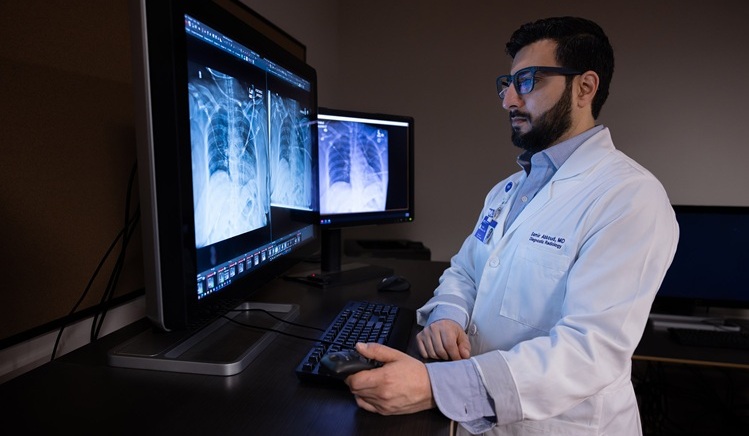
AI Radiology Tool Identifies Life-Threatening Conditions in Milliseconds
Radiology is emerging as one of healthcare’s most pressing bottlenecks. By 2033, the U.S. could face a shortage of up to 42,000 radiologists, even as imaging volumes grow by 5% annually.... Read more
Machine Learning Algorithm Identifies Cardiovascular Risk from Routine Bone Density Scans
A new study published in the Journal of Bone and Mineral Research reveals that an automated machine learning program can predict the risk of cardiovascular events and falls or fractures by analyzing bone... Read more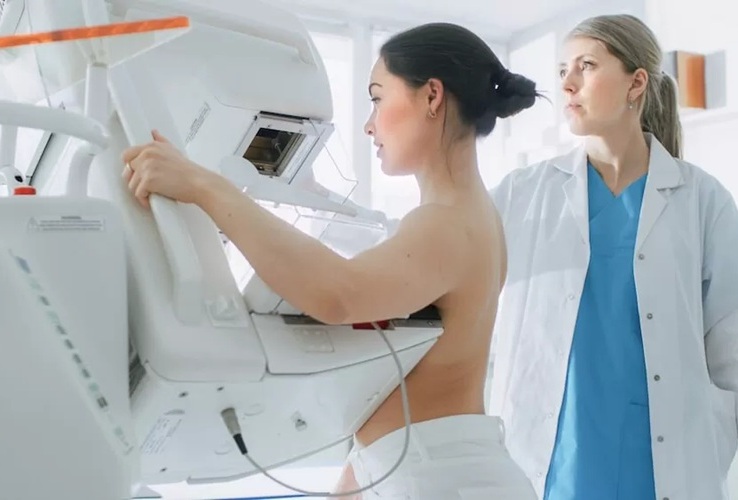
AI Improves Early Detection of Interval Breast Cancers
Interval breast cancers, which occur between routine screenings, are easier to treat when detected earlier. Early detection can reduce the need for aggressive treatments and improve the chances of better outcomes.... Read more
World's Largest Class Single Crystal Diamond Radiation Detector Opens New Possibilities for Diagnostic Imaging
Diamonds possess ideal physical properties for radiation detection, such as exceptional thermal and chemical stability along with a quick response time. Made of carbon with an atomic number of six, diamonds... Read moreMRI
view channel
New MRI Technique Reveals Hidden Heart Issues
Traditional exercise stress tests conducted within an MRI machine require patients to lie flat, a position that artificially improves heart function by increasing stroke volume due to gravity-driven blood... Read more
Shorter MRI Exam Effectively Detects Cancer in Dense Breasts
Women with extremely dense breasts face a higher risk of missed breast cancer diagnoses, as dense glandular and fibrous tissue can obscure tumors on mammograms. While breast MRI is recommended for supplemental... Read moreUltrasound
view channel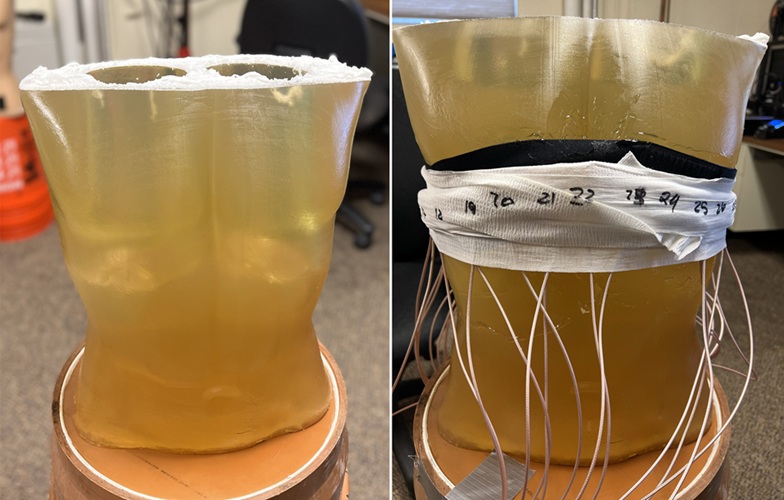
New Medical Ultrasound Imaging Technique Enables ICU Bedside Monitoring
Ultrasound computed tomography (USCT) presents a safer alternative to imaging techniques like X-ray computed tomography (commonly known as CT or “CAT” scans) because it does not produce ionizing radiation.... Read more
New Incision-Free Technique Halts Growth of Debilitating Brain Lesions
Cerebral cavernous malformations (CCMs), also known as cavernomas, are abnormal clusters of blood vessels that can grow in the brain, spinal cord, or other parts of the body. While most cases remain asymptomatic,... Read moreNuclear Medicine
view channel
New Imaging Approach Could Reduce Need for Biopsies to Monitor Prostate Cancer
Prostate cancer is the second leading cause of cancer-related death among men in the United States. However, the majority of older men diagnosed with prostate cancer have slow-growing, low-risk forms of... Read more
Novel Radiolabeled Antibody Improves Diagnosis and Treatment of Solid Tumors
Interleukin-13 receptor α-2 (IL13Rα2) is a cell surface receptor commonly found in solid tumors such as glioblastoma, melanoma, and breast cancer. It is minimally expressed in normal tissues, making it... Read moreGeneral/Advanced Imaging
view channel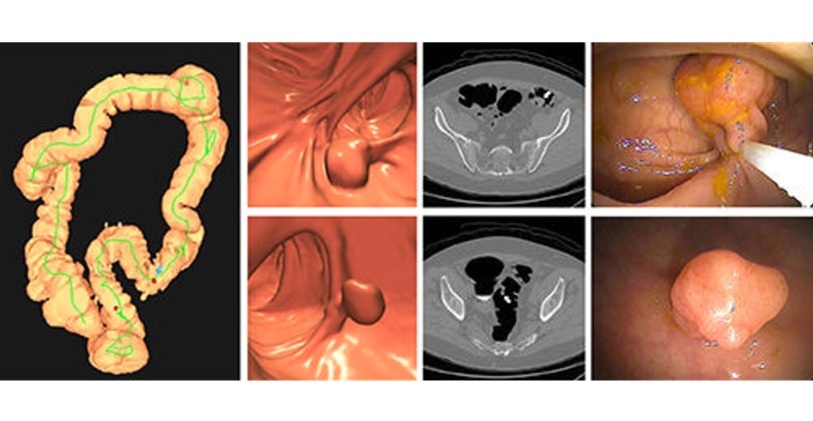
CT Colonography Beats Stool DNA Testing for Colon Cancer Screening
As colorectal cancer remains the second leading cause of cancer-related deaths worldwide, early detection through screening is vital to reduce advanced-stage treatments and associated costs.... Read more
First-Of-Its-Kind Wearable Device Offers Revolutionary Alternative to CT Scans
Currently, patients with conditions such as heart failure, pneumonia, or respiratory distress often require multiple imaging procedures that are intermittent, disruptive, and involve high levels of radiation.... Read more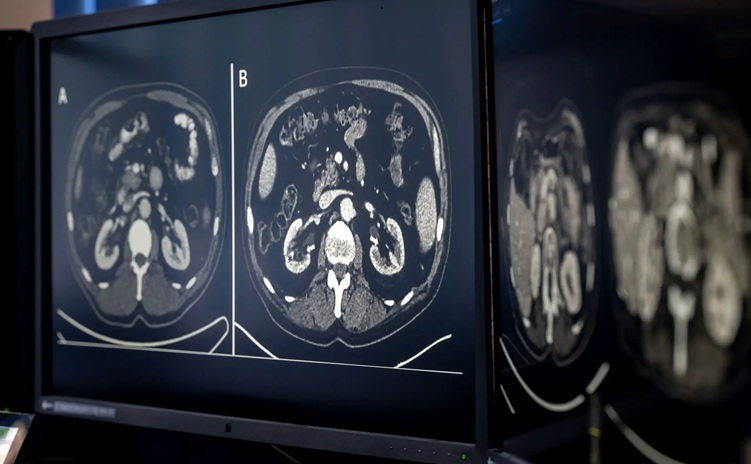
AI-Based CT Scan Analysis Predicts Early-Stage Kidney Damage Due to Cancer Treatments
Radioligand therapy, a form of targeted nuclear medicine, has recently gained attention for its potential in treating specific types of tumors. However, one of the potential side effects of this therapy... Read moreIndustry News
view channel
GE HealthCare and NVIDIA Collaboration to Reimagine Diagnostic Imaging
GE HealthCare (Chicago, IL, USA) has entered into a collaboration with NVIDIA (Santa Clara, CA, USA), expanding the existing relationship between the two companies to focus on pioneering innovation in... Read more
Patient-Specific 3D-Printed Phantoms Transform CT Imaging
New research has highlighted how anatomically precise, patient-specific 3D-printed phantoms are proving to be scalable, cost-effective, and efficient tools in the development of new CT scan algorithms... Read more
Siemens and Sectra Collaborate on Enhancing Radiology Workflows
Siemens Healthineers (Forchheim, Germany) and Sectra (Linköping, Sweden) have entered into a collaboration aimed at enhancing radiologists' diagnostic capabilities and, in turn, improving patient care... Read more













.jpeg)



